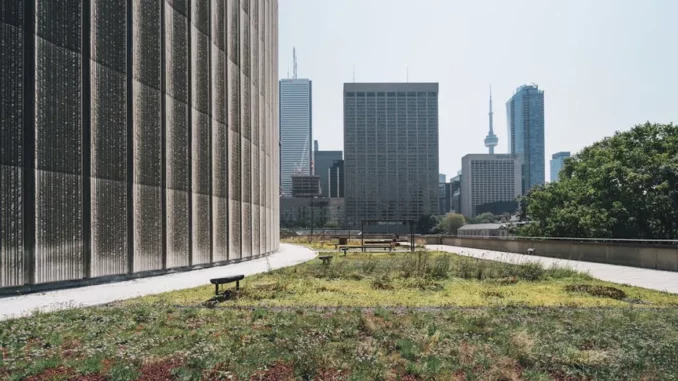
In a world increasingly aware of climate change and environmental impact, sustainable construction has become more than a buzzword; it’s a necessity. Recently, I had the chance to sit down with Emily Carter, a seasoned project manager in the field of sustainable construction. Emily’s insights provide a roadmap for anyone looking to delve into this rewarding yet complex arena. Here’s a recount of our conversation, filled with practical advice and professional wisdom to help you navigate the intricacies of eco-friendly design, materials selection, and energy efficiency, all while maintaining the project’s integrity and budget.
Focus360 Energy: property compliance services – pre-planning to post-construction. Learn more.
Understanding the Basics is Crucial
Emily began by stressing the importance of a solid foundation in the principles of sustainable construction. “Before diving into any project, it’s essential to have a thorough understanding of what sustainable construction entails,” she said. “This includes knowledge of green building standards like LEED, BREEAM, or Passive House, as well as a grasp of renewable energy sources and sustainable materials.”
She emphasised that these standards are not just guidelines but frameworks that help ensure the project’s ecological footprint is minimised. “They provide a checklist of sorts, ensuring that every aspect of the project—from design to execution—is carried out with sustainability in mind,” she added.
Project Management and Organisational Skills
Next, Emily highlighted the indispensable role of strong project management and organisational skills. “Sustainable construction projects are complex and multifaceted,” she explained. “Being organised is non-negotiable. You need to keep track of numerous factors, from materials sourcing to labour management, all while adhering to stringent environmental standards.”
Emily shared that using project management software can be a game-changer. “Tools like Microsoft Project or Trello can help you stay on top of deadlines, budgets, and team responsibilities,” she noted. “These tools enable you to visualise the entire project timeline and identify potential bottlenecks before they become issues.”
Technical Proficiency in Eco-Friendly Design
When it comes to sustainable construction, technical proficiency in eco-friendly design is paramount. Emily pointed out that this skill set encompasses a wide range of areas, including energy modelling, thermal dynamics, and the integration of renewable energy systems.
“Energy efficiency starts at the design phase,” she said. “It’s about more than just choosing the right materials; it’s about designing buildings that consume less energy from the outset. This might involve integrating solar panels, using high-efficiency HVAC systems, or designing buildings that make the most of natural light and ventilation.”
Material Selection and Supply Chain Management
One of the most challenging aspects of sustainable construction is selecting the right materials. Emily explained that this is where a deep understanding of the supply chain comes into play. “You need to know where your materials are coming from, how they’re produced, and what their environmental impact is,” she stated.
She recommended prioritising locally sourced materials to reduce transportation emissions and opting for recycled or renewable resources whenever possible. “It’s not just about the materials themselves, but their entire lifecycle,” she added. “You want materials that are durable, low-maintenance, and recyclable at the end of their life.”
Stakeholder Communication and Collaboration
Emily also underscored the importance of effective communication and collaboration with all stakeholders involved in the project. “Sustainable construction is a team effort,” she remarked. “You need to communicate clearly with architects, engineers, contractors, and clients to ensure everyone is on the same page.”
She suggested regular meetings and updates to keep everyone informed and engaged. “Transparency is key,” she said. “When everyone understands the project’s goals and their role in achieving them, you’re more likely to succeed.”
Regulatory Knowledge and Compliance
Understanding and complying with local, national, and international regulations is another critical skill. Emily noted that sustainable construction often involves navigating a complex web of environmental regulations and building codes. “Staying updated on these regulations is crucial,” she said. “Non-compliance can result in fines, project delays, and reputational damage.”
She recommended ongoing education and professional development to stay abreast of regulatory changes. “Attending industry conferences, workshops, and webinars can be invaluable,” she added.
Financial Acumen
Last but not least, Emily highlighted the importance of financial acumen. “Sustainable construction can sometimes be more expensive upfront, but it’s crucial to understand the long-term cost savings and return on investment,” she explained.
She advised developing a robust financial plan that accounts for these factors. “You need to be able to articulate the financial benefits of sustainable construction to stakeholders who may be focused on initial costs,” she said. “This includes calculating potential savings from energy efficiency, reduced maintenance costs, and increased property value.”
Conclusion
As our conversation drew to a close, Emily left me with a powerful thought: “Sustainable construction is about more than just building green. It’s about creating structures that are better for the environment, better for the people who use them, and better for the communities they’re part of.”
Her insights serve as a valuable guide for anyone embarking on a sustainable construction project. By prioritising these key skills—understanding the basics, project management, technical proficiency, material selection, stakeholder communication, regulatory knowledge, and financial acumen—you’ll be well-equipped to navigate the complexities of eco-friendly design and build projects that stand the test of time.
Kenneth George


Be the first to comment